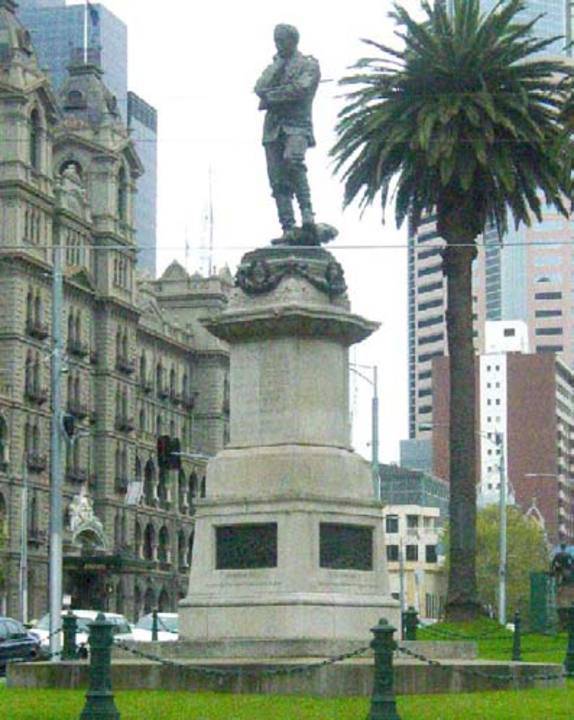| Back to search results » | Back to search page » |
|
Hamo Thornycroft "General Gordon Memorial" Statue
LocationGordon Reserve, Spring Street,, EAST MELBOURNE VIC 3002 - Property No B4349
File NumberB4349LevelNational |
|
Statement of Significance
This statue of General Gordon is another casting of Hamo Thornycroft's original which was sculpted after Gordon's death and erected in London in 1888. The Melbourne version was paid for by public subscription and unveiled in June 1889. The bronze figure of Gordon stands, in an informal pose, on a tall stone pedestal on which there are four bas-reliefs illustrating significant stages of Gordon's life. Thornycroft was a successful and respected British sculptor of the late Victorian era, a member of 'The New Sculpture Movement'.
The statue of General Gordon is significant for aesthetic reasons, being the work of Hamo Thornycroft, one of the Britain's most successful and respected sculptors of the late Victorian era, a member of the dominant sculpture movement at that time, 'The New Sculpture'. Thornycroft's portrait works are among his most admired and the Gordon monument is his only public work in Australia, except for a marble piece held by the Art Gallery of New South Wales. Bronzed plaster versions of two of the panels were exhibited at the Royal Academy in 1889. The influence of the attitude in which Thornycroft has depicted Gordon can be seen on later Australian artists and artisans when creating monuments and stained glass windows memorialising the Boer War and the First World War: the citizen as soldier, standing at ease rather than triumphal.
The statue of General Gordon is significant for historic reasons as it commemorates a significant figure of the day, General Charles George Gordon, whose life is commemorated in Britain by many monuments in addition to that by Hamo Thornycroft (in St Paul's Cathedral by Sir Joseph Edward Boehm, in Westminster Abbey and at Chatham, both by Edward Onslow Ford and in Rochester Cathedral). The monument also commemorates a significant event of the day: Gordon's death in 1885 at the storming of Khartoum by the Mahdi, the spiritual and temporal leader of a Muslim uprising in Sudan. For Australia, there is also historical significance in the fact that news of this event was one of the first major pieces of news to arrive by the under-water telegraph cable laid in 1872 that linked Australia to Britain.
The Gordon monument also represents Victoria's participation in Australia's first steps on a world stage: while New South Wales sent a contingent to Sudan and declined Victoria's offer of soldiers, the people of Melbourne then needed to make a different gesture with this magnificent monument as a result. The work also has historical significance as Melbourne's third public statue to commemorate an individual (following the Burke and Wells, erected 1865 and the Redmond Barry, 1887) and has one of the most important positions for sculpture in the city.The statue of General Gordon is significant for social reasons as it commemorates a person whose character was held to represent the highest ideals of the Victorian age, displaying steadfast courage as well as charity. Gordon's death caused an outpouring of public grief in Australia as well as Britain: the Melbourne unveiling was described in a newspaper of the day as, 'rather the canonising of a saint than the crowning of a hero'. Gordon had also fulfilled perhaps the ultimate criterion for being a hero: he had died at his post. Just as Burke and Wills are more famous than Sturt, and Scott is more known than Amundsen, Gordon's death secured his place in history when memory of specific deeds has faded.
Classified: 30/04/2005
Group
Public Art
Category
Statue




